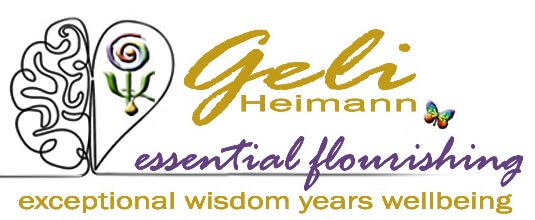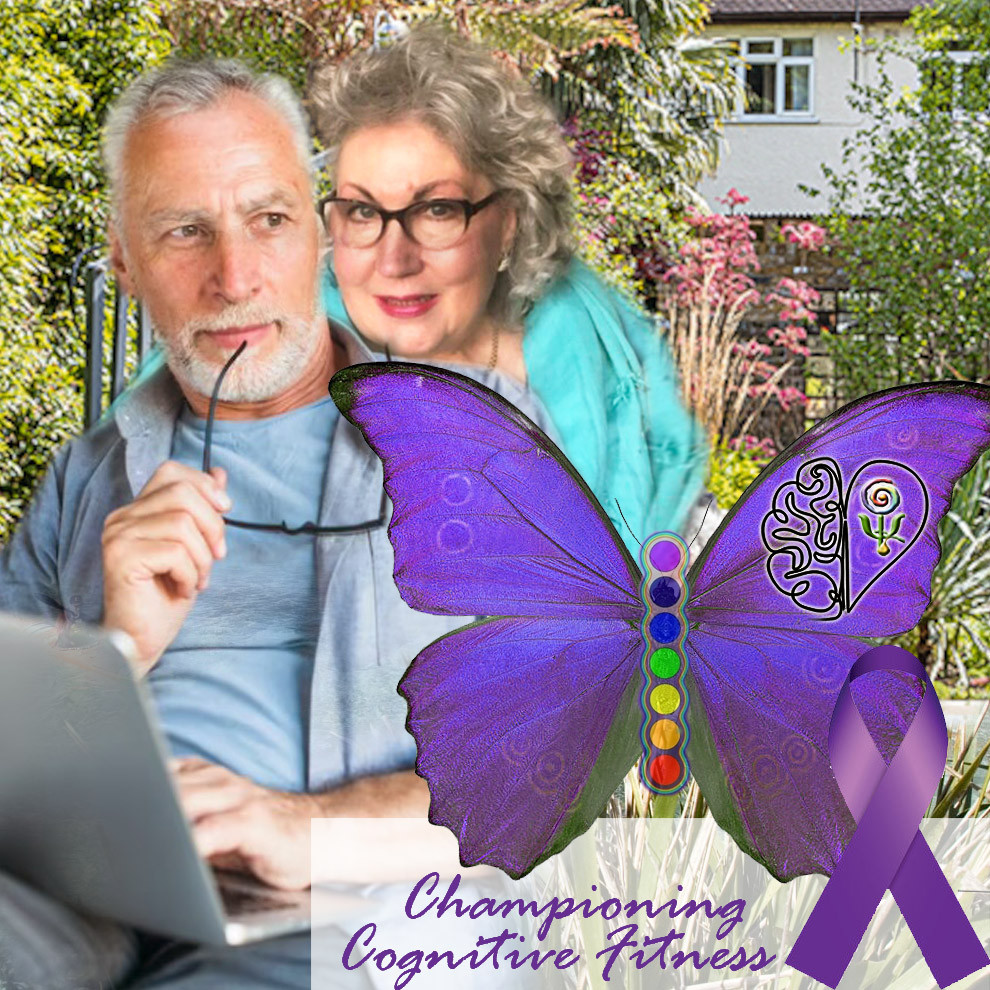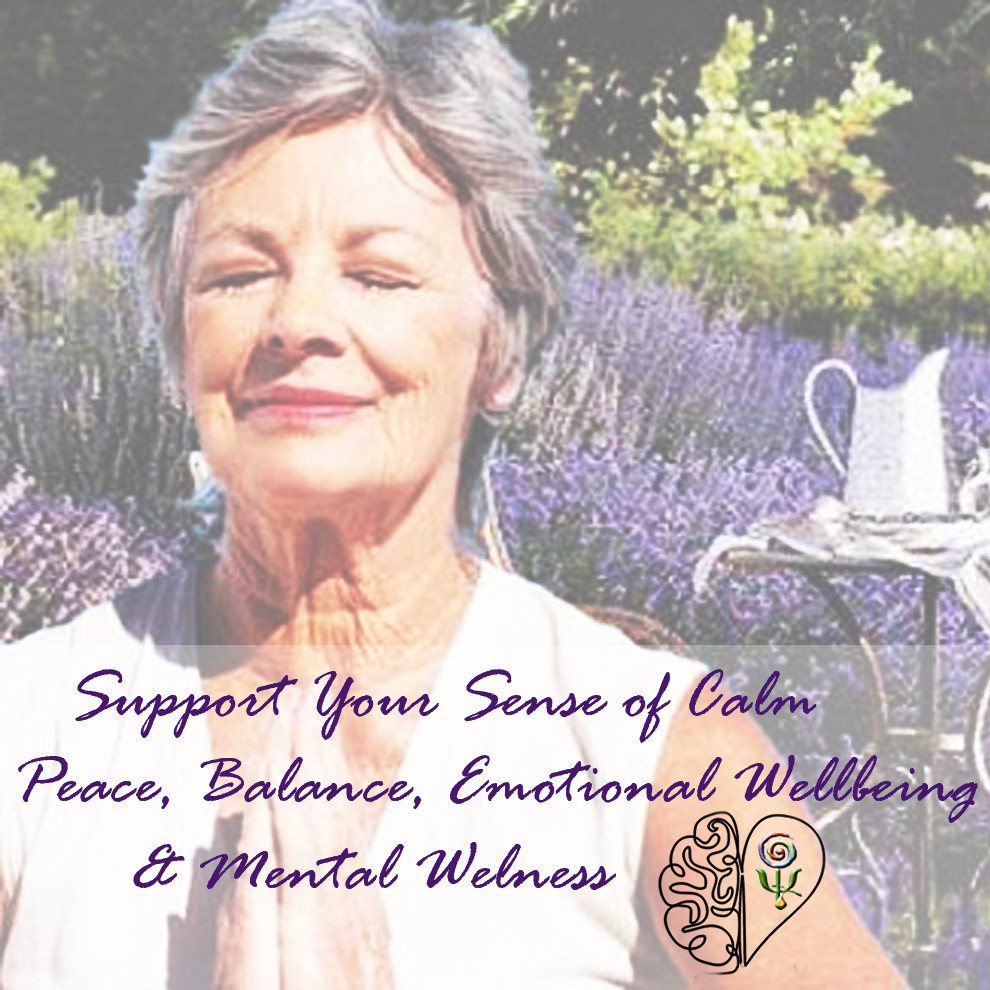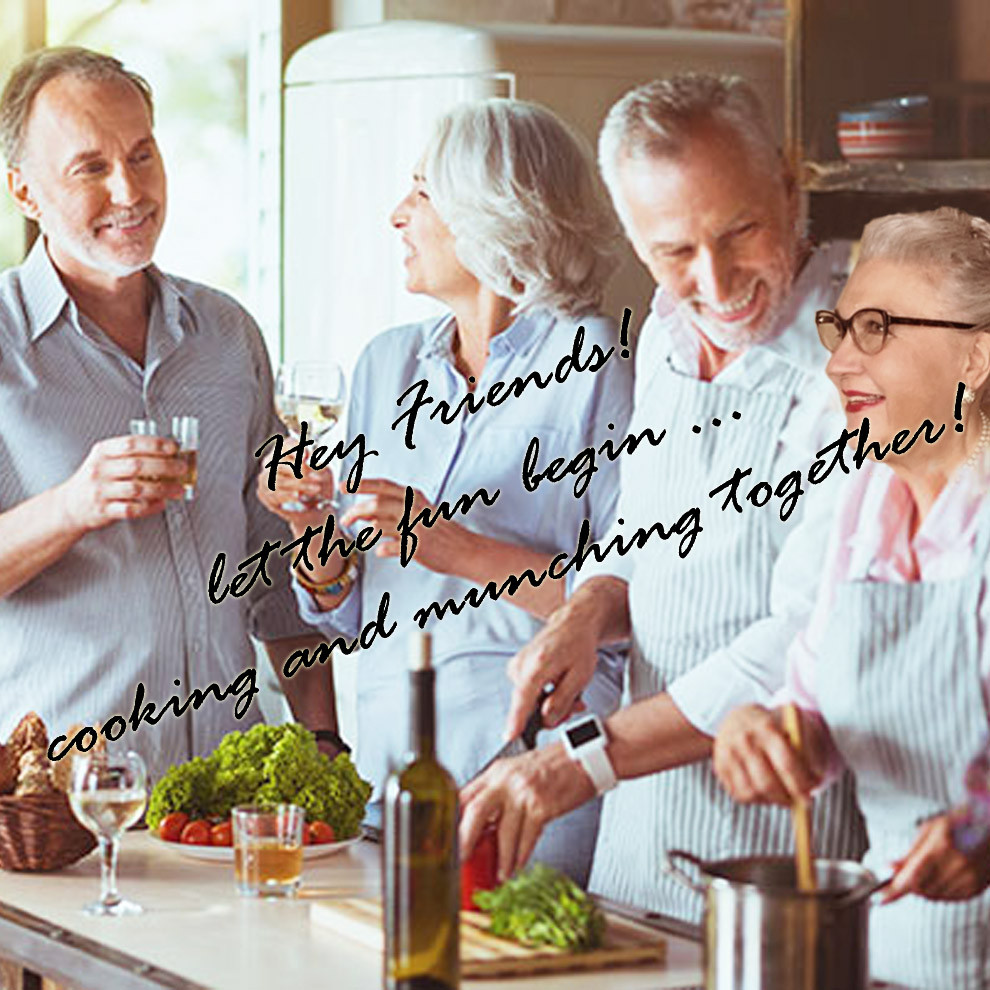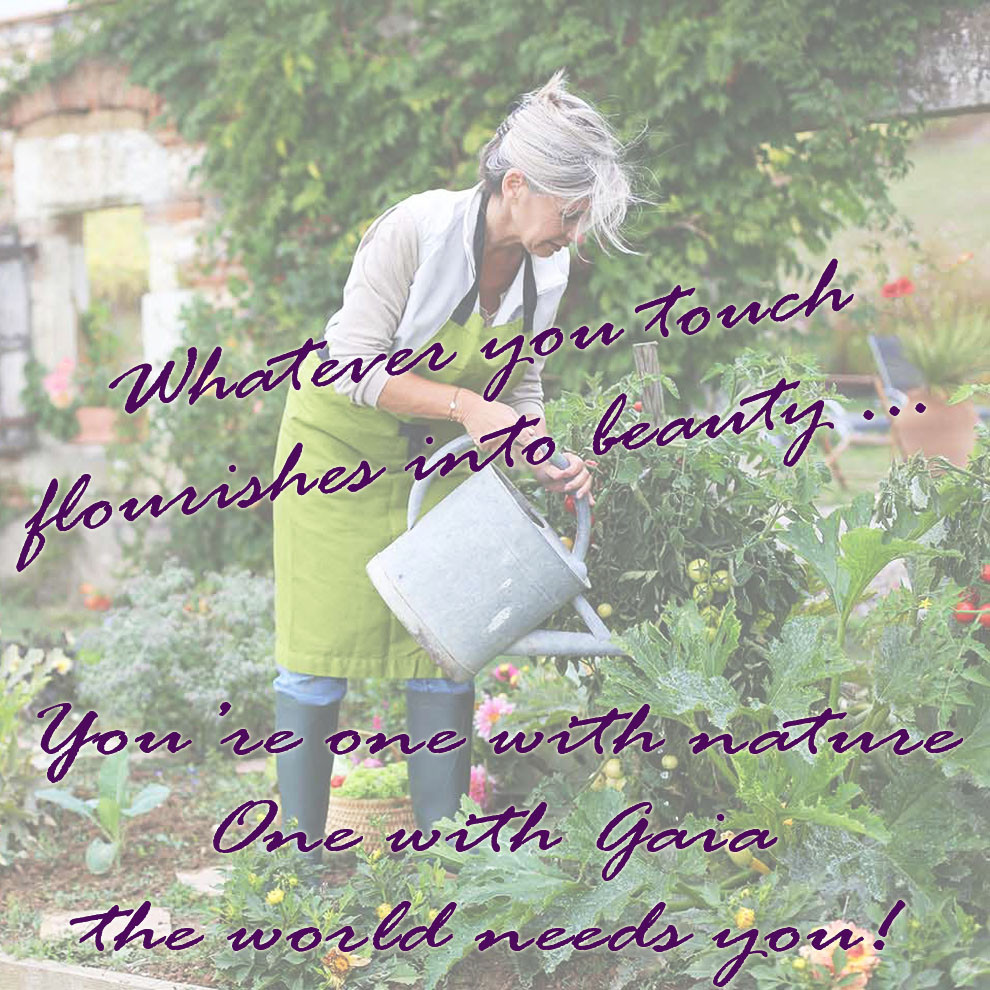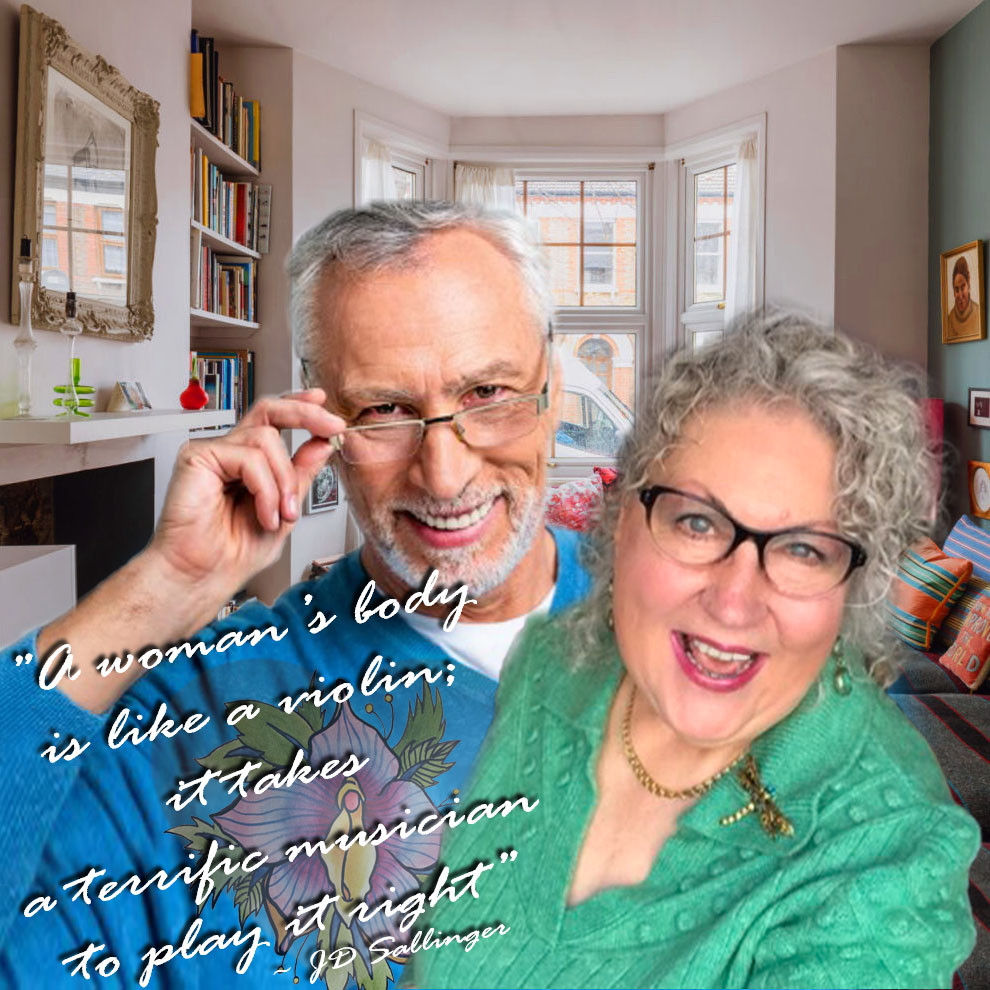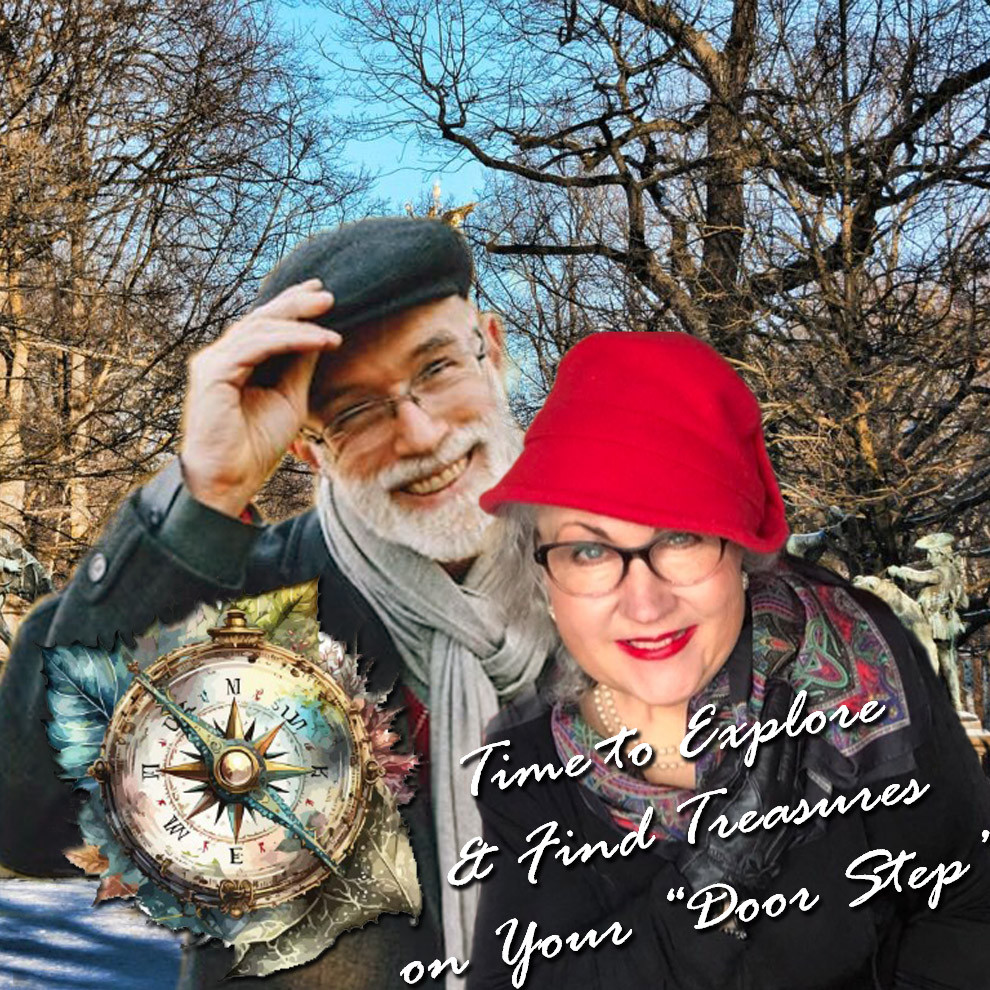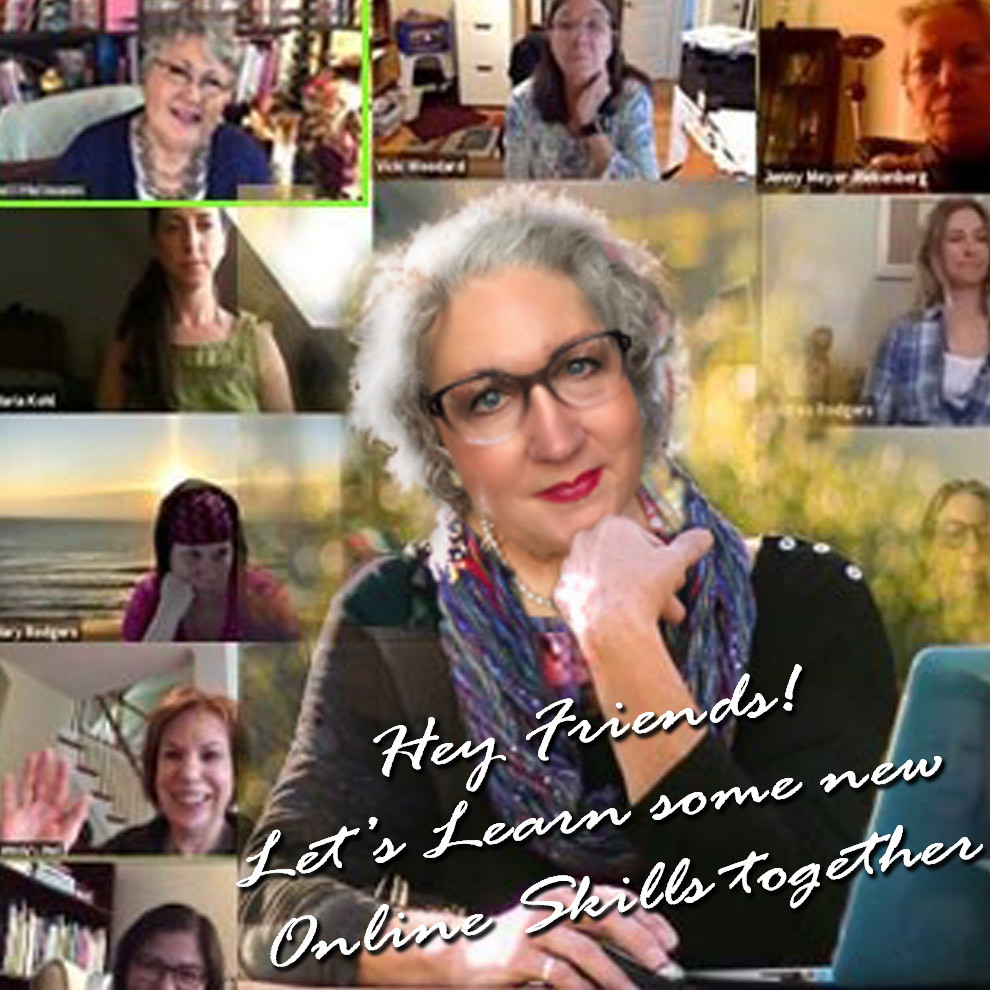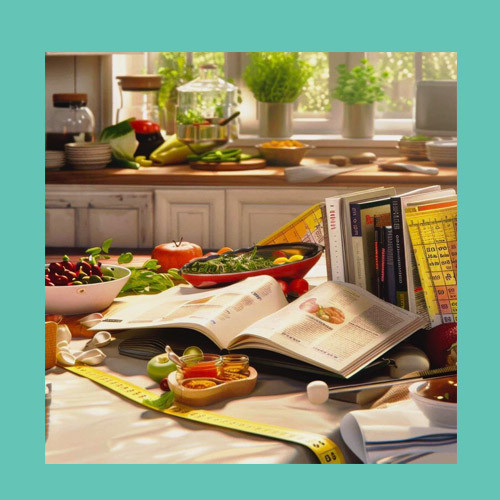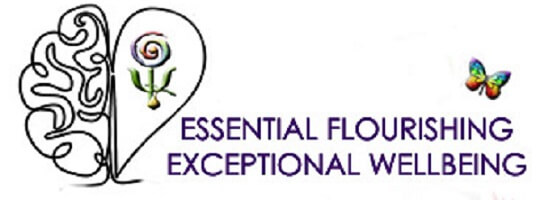wisdom years
inspired
Self-Care | Mental Health | Wellbeing | Mindfulness | Feel Good | Love and Sex | Life & Times | Home and Away |
plus a New-Retirement Lifestyle Business
and of course, make time for yourself!

You are the creative director
of a magical third-age production
where you can choose from a rich palette
according to what suits YOU best!

Welcome to the Wisdom Years Flourishing Magazine
Joy, Passion
Sacred Intimacy Arts
and Experiencing a Meaningful
"New Retirement" Way of Living and Thriving
Life & Culture
Far or Near
On Your Terms!
Supported by
Physical & Mental Wellness,
and Cognitive Fitness.

WHO WILL YOU *BE* WHEN YOU ENTER YOUR MAGICAL FINAL CHAPTER AND RETIRE?
or, Who 'Are' you, if you have already started your on that special Journey?
“I’ll play golf, and I’ll go travelling,” or, “I’ll join a charity and find a few hobbies,” and maybe even, “I’ll spend more time with my grandkids.” While these activities may be true, they no longer define who you are the way the titles of what you did during your career did, do they?
... and what's 'age appropriate' anyway? You get to decide!
You’re not going to build your identity around golfing or travelling specifically are you? So I want you to stop yourself from answering this question, "What will you do when you retire?", until you’ve answered another one first …
“Who will you be when you retire?”
Throughout your life and career, you acquired a range of labels that were associated with what you 'did', ‘do’ on a daily basis. There are common labels, such as parent, daughter/son, sibling, or professional career related ones. These labels often carry a sense of pride as they signify your place in the social and professional hierarchy.
The arrival of the wisdom years and retirement is a turning point where the focus shifts from "What you do" to "who you truly are" when stripped of all those external judgmental factors.
You are warmly invited to our lifestyle online community
that offers you some perfect mood boosters with uplifting articles, inspirational guides, motivational health,
mental wellness advice and so much more
helping you live your happiest and boldest life yet!

Let's Have a Look at Your Potential
Epic Enlightened 'New Retirement' Gameplan Map
for the Lifestyle that is Right for YOU!
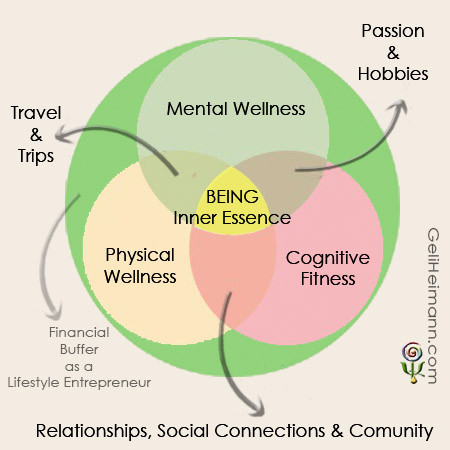
Many Retirement advice centres focus on activities you now may have the freedom to enjoy. However, I find that this is really putting the cart in front of the horse!
If we focus on finally doing things that we fancy, it just may not have the satisfying lasting effect that we thought it would have.
So, rather orienting ourselves from the outside in, let's contemplate the Path from the Inside Out.
There is a reason why you are still on this earth. Growing older and wiser is denied to many.
When you, your soul/spirit, chose to be incarnated into your current human form, you said 'YES' to a mission and purpose. There may even be some lessons you had to learn and/or help others accomplish theirs.
You may have gained valuable skills and had a career using them, but why exactly did you desire to learn those skills. It is discovering your ultimate 'WHY'. It is getting a clearer picture as to who you really are and who you are here to serve. What is Your raison d'être? What is Your soul essence intertwined with the Divine (whatever you call the Divine) to express Your raison d'être through skills, etc., you acquired. What is the inner joy that drives You forward regardless of circumstances or (often well-meaning but misguided) expectations by others? What is the Real You?
The Real You, Your Inner Beingness, informs what your passions and maybe hobbies are. It may inform your love for travelling and getting to know new cultures, or beauty in nature, arts or music; it also informs you who and why you develop relationships with and explore social connections and communities.
All this, of course is supported by Physical Wellness, Mental Wellness and Cognitive Fitness, without which your most cherished desires will not flourish at their best.
Underpinned all of that is financial freedom. I guess that goes without saying, but many do not enjoy that in their advanced years.
I am not a financial advisor, you would need to find someone else for that, but I can share with you what I find useful in supporting my own lifestyle as a later-age entrepreneur and business psychologist.

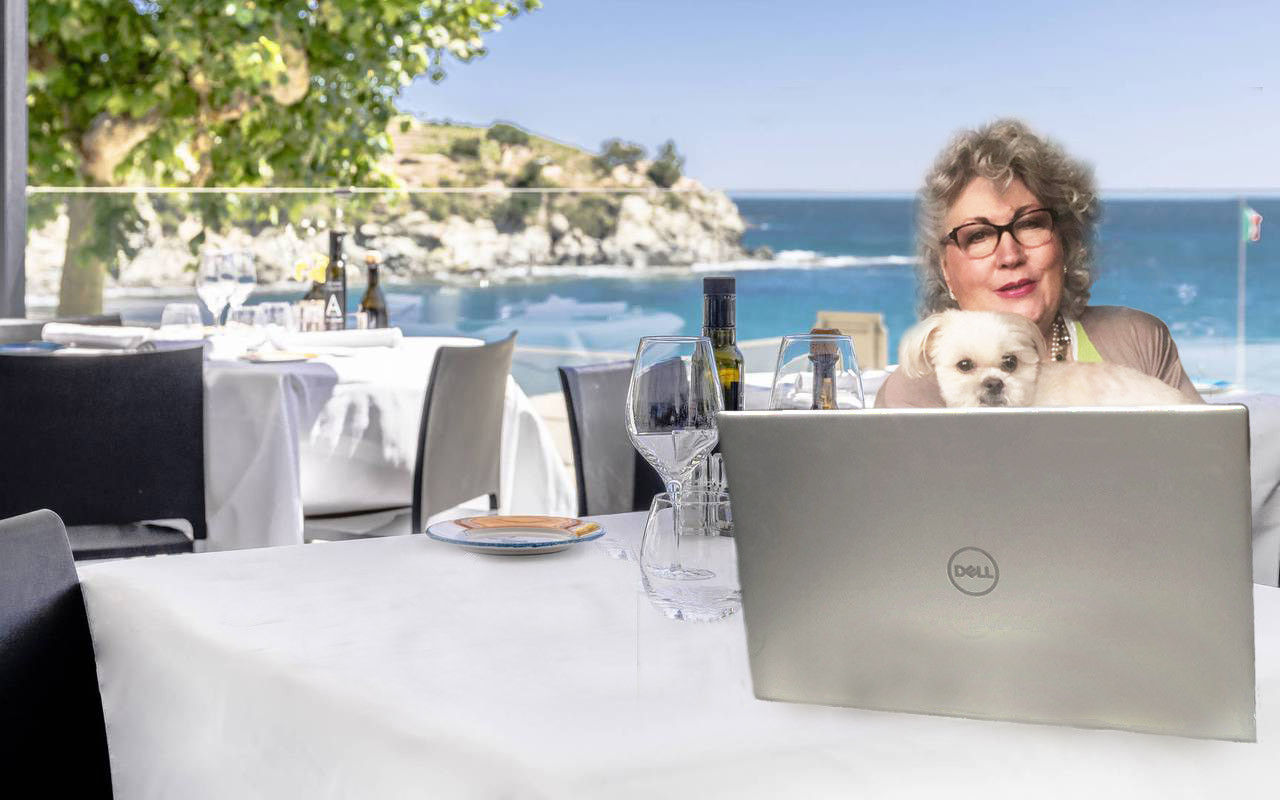
Hi! I'm Geli Heimann, BSc (Hons), MSc Psych.
Apart from working with clients in the trauma recovery and Tao-Tantric intimacy wellness field, I'm also a Business Psychologist, Consultant and Holistic Strategist to Post-Career Executives, Entrepreneurs and others, transitioning to a new phase in their life, crafting an income producing profitable business around their chosen retirement lifestyle.
As mentioned, a significant part of my passion is helping clients with PTSD and trauma recovery using energy psychology methods such as EFT (Emotional Freedom Technique) Tapping.
I am also a Tao-Tantra Sacred Sexuality educator, helping singles or couples to re-ignite their pleasure and bliss. There are a few blog posts with Intimacy Master Skills mentioned , plus I provide private coaching.
Arts, music and spirituality, quantum science, metaphysical and universal-law is a big thing for me. There is definitely a woo-woo side to me ... 😉
I am also an online marketing, functional wellness empowerment coach, and transformational success mentor ... as well as a pet parent to two Mi-Ki dogs, Pippin and Arwen (Pippin here on the picture with me)
.... what I am not? I'm not a financial retirement planner, I do not give financial advice ... so, no number crunching from me ;)
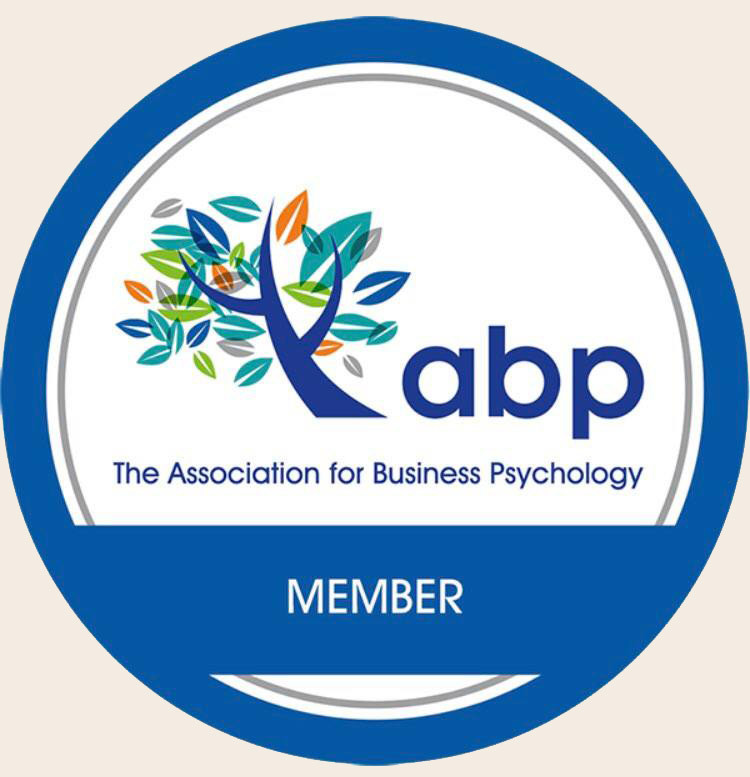
As a business psychologist, I help you craft an income producing profitable online business together with enjoying a successful retirement lifestyle with purpose, passion and clarity.


& Aroma Soul Spa
Even the most successful and happiest amongst us are likely waging a battle of self doubt, stress, and possible lingering effects of past trauma that have not shifted in talk therapy (still getting triggered ? ..) ... always trying to prove ourselves and secretly questioning our own worth.
Geli Heimann, BSc (Hons), MSc Psych, and Functional Wellness, can help you unblock your path to flourish right from the convenience and comfort of your own home.

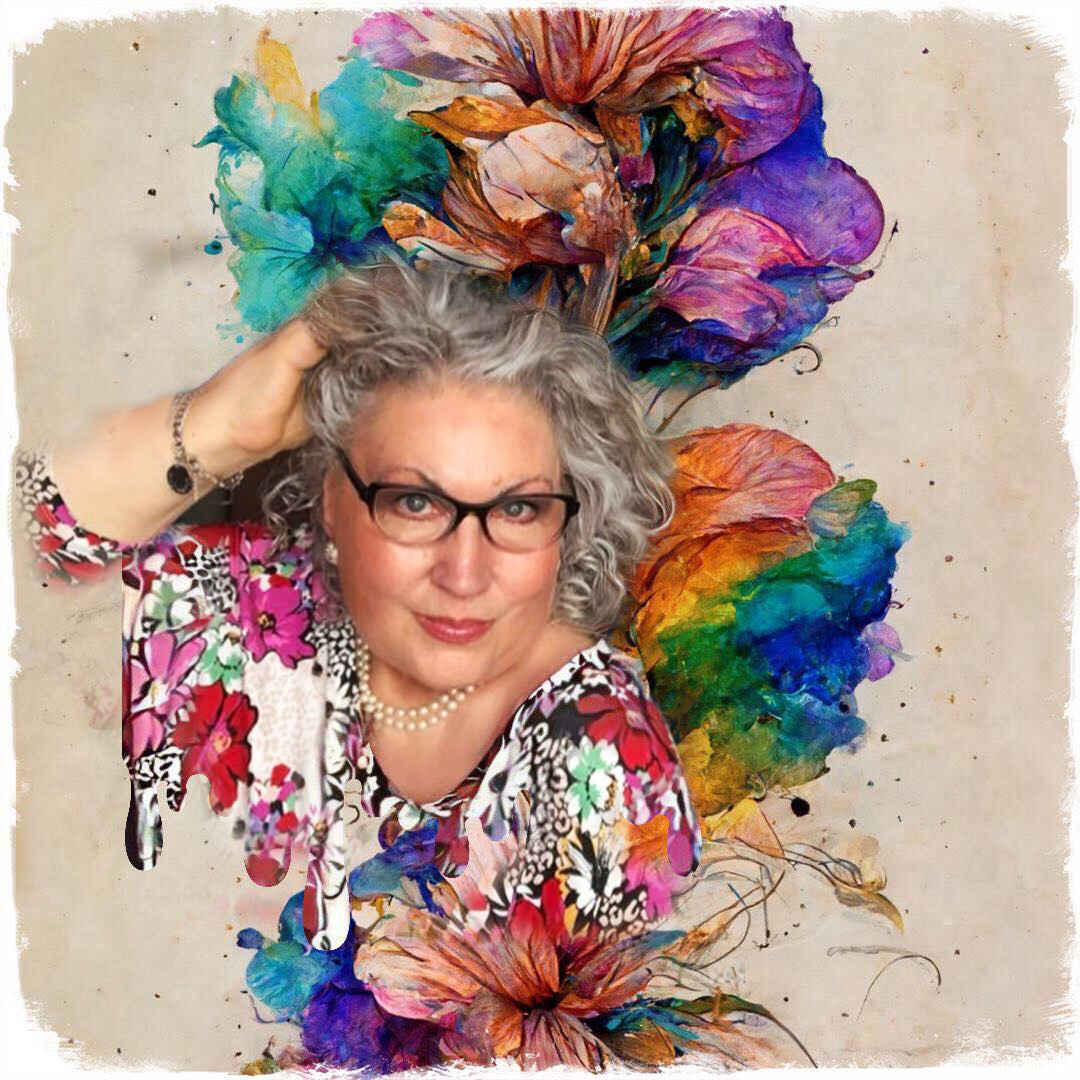
STAY CONNECTED! SUBSCRIBE TO OUR EMAIL LIST FOR ALL THE LATEST UPDATES FROM
REIMAGINING A FLOURISHING AND PROFITABLE NEW RETIREMENT

The New Way to Retire is to Live Full-Out on Your Terms
Celebrating Your Lifetime of Knowledge and Experiences,
plus, if you so choose,
Flourishing as a Digital Entrepreneur.
... and we'll give you the tools to be equipped,
to realize your full potential and
step into the best version of you to fulfil your dreams,
... without wasting precious time
to live your best life!

It's Never Too Late To Abundantly Create The Life You Love!


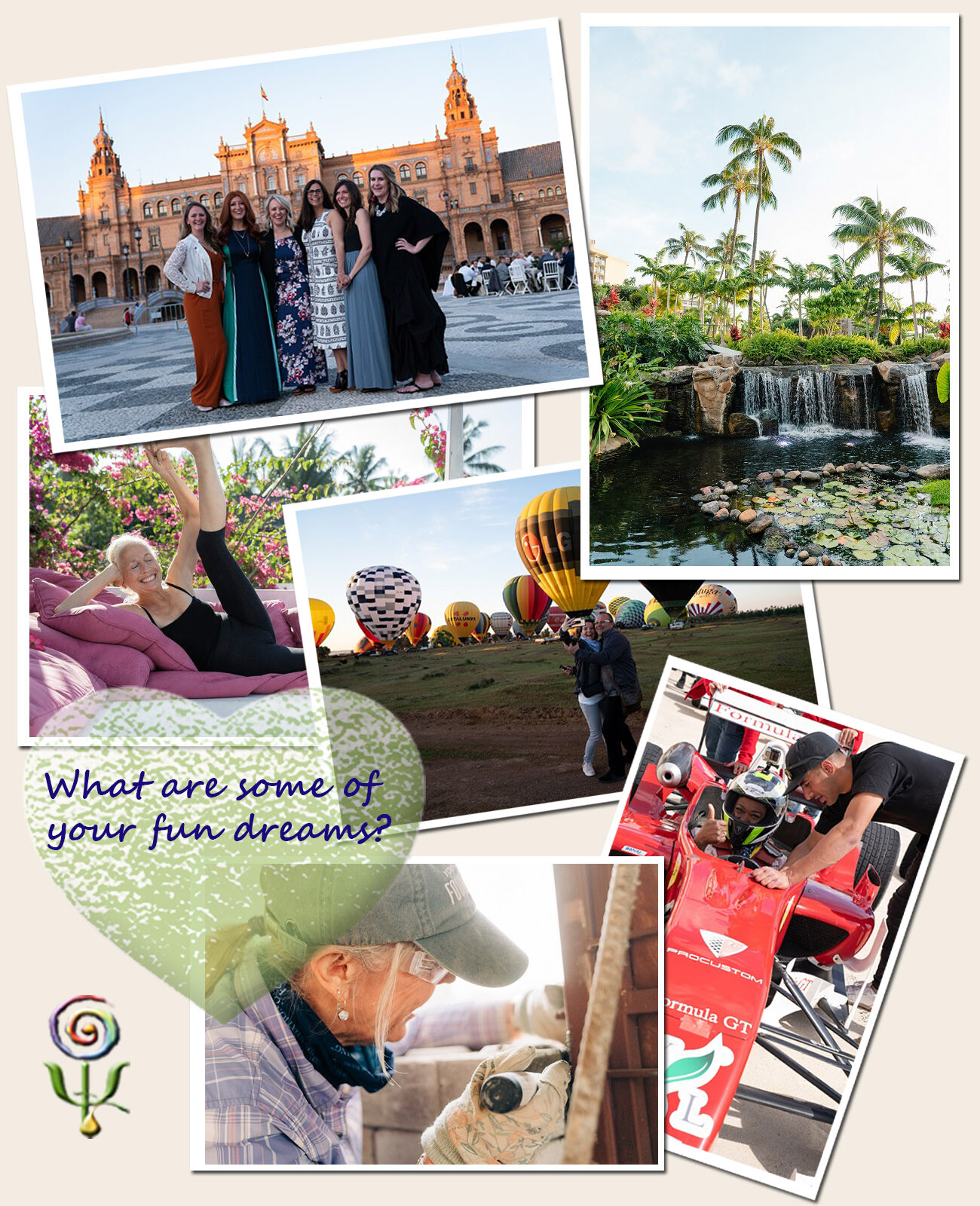
What is on your Bucket List?
What are you dreaming about?
Is it a yoga retreat somewhere in Bali?
or some relaxing and rejuvenating time at a resort in Maui?
.... maybe join the team in Valencia, Spain?
Or you might enjoy taking a selfie before taking off in a hot air balloon ride ... not to mention having a go at steering a formula one car around a track.
Or perhaps you want some hands-on work together with other philanthropists and help rebuild homes, schools and hospitals in disaster zones ...
Well, yes, there is so much more!
I personally also love going on educational cruises with lectures and workshops on board and then heading to sites of antiquity.
I would love to know how you would expand your adventure trail or your dream experiences ... :)

We'll help you create a profitable online business
around your flourishing
and rewarding dream lifestyle,
not a squeezed-in lifestyle around a stressful business or boring retirement!

ENTREPRENEURSHIP
is the NEW
RETIREMENT PLAN
You’ll be happy to know that there are a wealth of benefits to becoming a remote entrepreneur or digital nomad ... (or loving your home and creating some extra cash to enjoy a few luxuries) !
They are similar, but there is a slight difference between the two. A digital nomad is someone who lives and works to travel the world. As the term nomad implies, digital nomads don’t settle in a single place but are constantly moving, visiting new cities and new countries all year round. Being a digital nomad is a lifestyle based on travel and online work that’s becoming increasingly popular.
A remote entrepreneur is someone who starts a business that can be managed and operated entirely online. Consequently, these types of businesses don’t require a physical premise or office.
I personally consider myself more of the latter. I live in London, UK. However I love to travel and I am considering to maybe living partially in the South of France.

Having said that, part of my family live in Sydney, Australia. So they fly in to Barcelona, Spain. From there they hire a car and drive the two hours via the Pyrenees to Argelès-sur-Mer, France for family time.
As you can see on the pictures above, there is nothing quite like jumping into the car in London, leaving the heavy traffic behind and drive down to Portsmouth at the south coast. Then dock the car in on the Ferry and enjoy some splendid dining whilst on board.
Arriving in France at St Malo, then it's a leisurely drive through Bordeaux and the Saint-Émilion wine area. With no deadlines, it is just wonderful to cruise through the quaint little traditional wine villages, stop wherever it looks inviting for the night, enjoy the delectable French food and wines, then continue to cruise on the next day enjoying the beautiful landscape.

Certainly arriving at the Catalan style old towns Argelès-sur- Mer and Collioure in the Pyrénées-Orientales is my little haven at the Mediterranean coast, the perfect combination of mountains and sea, not far from the Spanish border.

If you stay overnight at the castle, I can recommend their breakfast in the beautiful Art Nouveau style, typical of the Belle Époque.
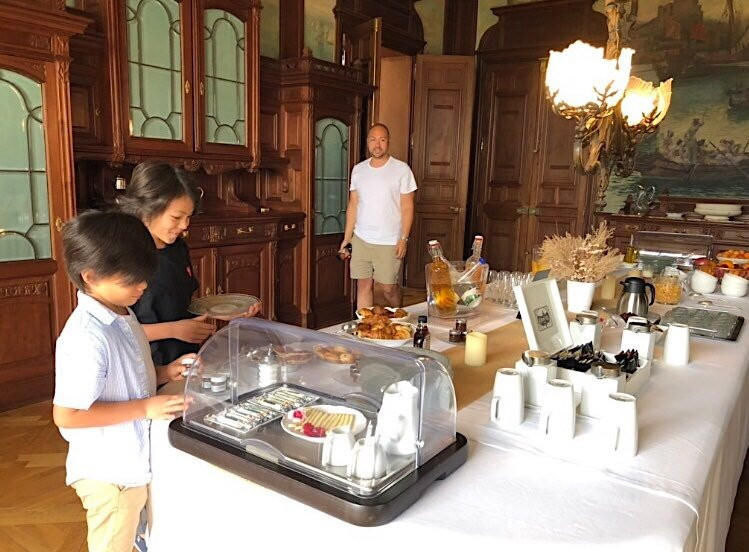
The castle grounds are wonderful, we even watched stork parents feed their babies in a huge nest on top of some massive old trees.
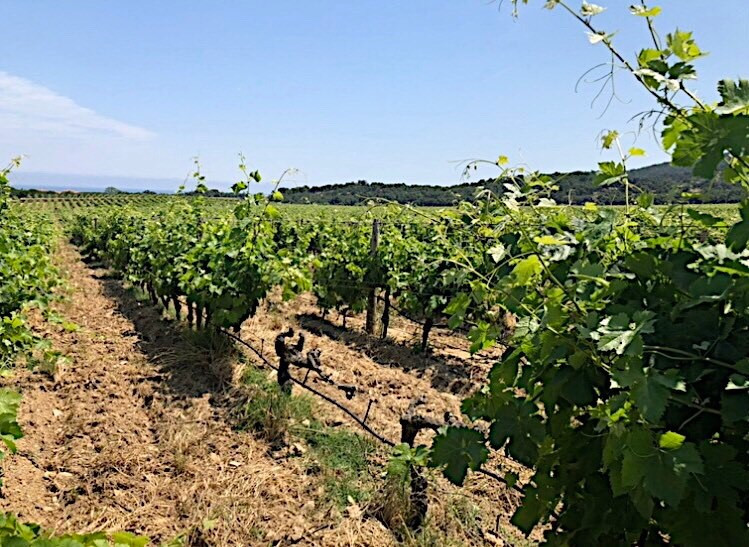
... always a delight for me, especially as I grew up in the wine growing part of Germany, where the house was surrounded by vineyards overlooking the river Rhine ...
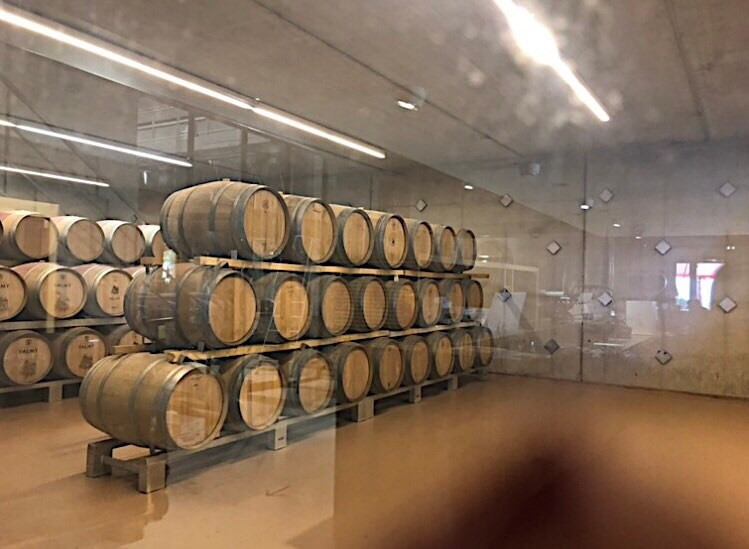
Do I have my laptop with me? Well, of course! Do I take in all the delightful surroundings whilst I work? Yes, of course! To me serving my clients is of great importance, but so is prioritizing everything personal, self-care, healthy living, family, relationships, and fun before any kind of work.
This is after all a time to make the NEW Retirement the best years of your Life!

The Wisdom Years
Lifestyle Magazine
Latest Thoughts, Musings & Tips:
Content to come
If according to Hippocrates, food is medicine, then a cook book or a recipe blog is the prescription pad.

Here comes my disclaimer: I am neither a medical doctor, nor a nutritionist. My background is holistic psychology, naturopathy, essential oils, and I am an enthusiastic hobby/family cook.
My food section here on this website is not intended to diagnose, prescribe or treat any health or psychotherapeutic condition and should not be used as a substitute for consulting with a professional health care provider.

CREATING A HOLISTIC FUNCTIONAL NUTRITION KITCHEN
CONSCIOUSLY
What we eat matters!
Food isn't just nourishment and pleasure. The right kind of food can enhance the quality of our lives, especially as we age, now in our wisdom years. We don't just want that our bodies function with minimal of aches and pains, we also strive for mental health and cognitive vitality!
Every bite we take can either upgrade or downgrade our biology. It's the key to living a long and healthy life.
It's not always easy to make the right food choices. But the kitchen is our ultimate playground for creating magic with real whole food.
Considering that our bodies are individually different,
there is no one perfect way of eating for everyone!

- Eat real food, preferably grown organically and naturally.
- Transform your kitchen into a sanctuary of wellness, a safe zone with only foods that nourish rather than harm.
- Eat animals that are raised in ways that are humane (Or as my son would say, meat from 'happy animals)
- Focus on quality and nutrient density
- Avoid ultra-processed food
- Keep sugar and starch to a minimum.
- Eat lots of plants, Keep meat as a side dish. Quality should be your most important objective when shopping, cooking, and eating.
- Beware of foods with health claims on their packaging, such as "reduced sugar", a marketing ploy for "healthy food" pretenders.
- Ensure you consume enough omega-3 fats.
- Eat enough high-quality protein to maintain muscle mass.
- Learn to find joy in cooking and preparing life-giving meals to share with loved ones.
- Find connectedness and friendship in community. Sharing in life with others is as old as we are as a species.
As I mentioned earlier, I am an enthusiastic hobby cook. I never claim to be a purist! Despite all the knowledge I have gathered over 70 years, I still fancy some less-than-beneficial munchies ever so often. However, I am getting better at it, hence my contribution of it here on this website. I aim to inspire you to join me in eating and cooking consciously.
One thing I had to wean myself off was relying on prepacked sauces and seasoned powder mixes for certain dishes. Cooking from scratch was initially a challenge. Like many other people, my kitchen had been held hostage by the food industry with some ultra-processed fare.
As you may have read elsewhere, I managed to die due to a cardiac arrest, but was resuscitated and given a second chance with life.
I found the book: "The Paleo Cardiologist: The Natural Way to Heart Health" by Dr. Jack Wolfson very useful. These days, I like to focus more on nutrient-dense plant-based food, but with carefully sourced meat, fish, etc.
As we get older, I find a common theme amongst my clients and friends, which is mental health and cognitive fitness concerns. Like you, I am forever learning!
Because I have travelled a lot and enjoy cuisines from around the world, I also allow my artistic bent to surface and try to adapt certain dishes so that they fall into my conscious eating lifestyle. However, with some of the traditional family recipes here on this site, I just honour the time-proven ways, and well, enjoy them as they are.
The key is enjoyment, not being a health police fanatic. The 70/30 rule works for me.....
TRANSFORMING COOKING FROM CHORE TO JOY …
RE-IMAGINE WELLBEING AND COOKING AS MEDITATION
(imagine yourself being a Temple Priestess for your 'BodyTemple' as you create sacred foods with loving intentions)
WELL, WHAT EXACTLY IS MINDFUL EATING AND CREATING A CONSCIOUS & HEALING KITCHEN?
It is easy to overeat candy and junk food because these foods have been engineered by the food industry to keep you addicted. Food scientist literally plot how to highjack your brain chemistry with the ingredients in their products by tapping into your "bliss point" and creating "heavy users".
So, what does that mean for you? ... become a label reader on whatever package or jar you happen to think of buying - ideally foods without labels and packages. Or even better, get fresh, just picked plants from your garden or the market.
A BIT ABOUT MY FOOD BACKGROUND
Although I was born in Hannover, Germany, my second home was always with my grandmother in Göttingen. It was here that my father, Dr. Max Heimann, met my mother. He was a science plant disease doctorial student renting a small room in my grandmother's house, and my mother studied pharmacy. Göttingen is a German town known for its university. The Old Botanical Garden has a collection of medicinal plants and an arboretum.
 My grandmother was of aristocratic descent, born and raised in Bavaria. My grandfather moved the entire family over to Göttingen at some point. They lived in a very big old house with gardens all around. The large front garden was more of a gorgeous rose garden, and the back garden had all sorts of fruit trees, soft fruit and vegetable areas.
My grandmother was of aristocratic descent, born and raised in Bavaria. My grandfather moved the entire family over to Göttingen at some point. They lived in a very big old house with gardens all around. The large front garden was more of a gorgeous rose garden, and the back garden had all sorts of fruit trees, soft fruit and vegetable areas.As a Bavarian lady, grandma prided herself in excellent cooking. Yes, she as an amazing cook who lived into her mid 90's. Grandma was an old world-style cook, and food was fresh and seasonal. If it wasn't freshly brought in from the garden, it came from the market.
Grandma seldom cooked from a recipe, she was an intuitive cook who treated her ingredients with soul, care, attention, and respect. In my grandma's world getting into a healthy relationship with food was more important than blindly following a recipe.
On my original food website (the one I lost, and now bit by bit adding recipes here from whatever I could salvage), I remember how my daughter used to get irritated with me for not adding the exact measurements to most of my dishes. She rolled her eyes when I said that it's an art, she needs to feel intuitively how to connect with the ingredients and cook with love from the heart....
You see, anything you really get into a relationship with, will reveal it's secrets to you.
Many of us have been in a toxic relationship with food, and we can give ourselves permission to gradually walk free form that, learning the art of mindful self-care, inner harmony, joy and self-compassion.
When you are in a loving relationship with natural food and yourself, all you have to do is stand in the kitchen, your sacred space, with an open mind and heart, recognising the honour of preparing and cooking the food. It is learning the difference between cooking as a science and cooking as an art.
The process starts with a question: how does this particular dish want to be put together. Although I come from a science background, I also very much so embrace my woo-woo art of living. It's learning to experience and intimate relationship with life foods and vibrationally alive essential oils. You open yourself, and you are guided by a higher essence, and discover things you never knew before. It simply requires you to feel, to listen, and to trust yourself. That's art.
PRACTICAL Tips for Mindful and Conscious Meditative Meal Preparation
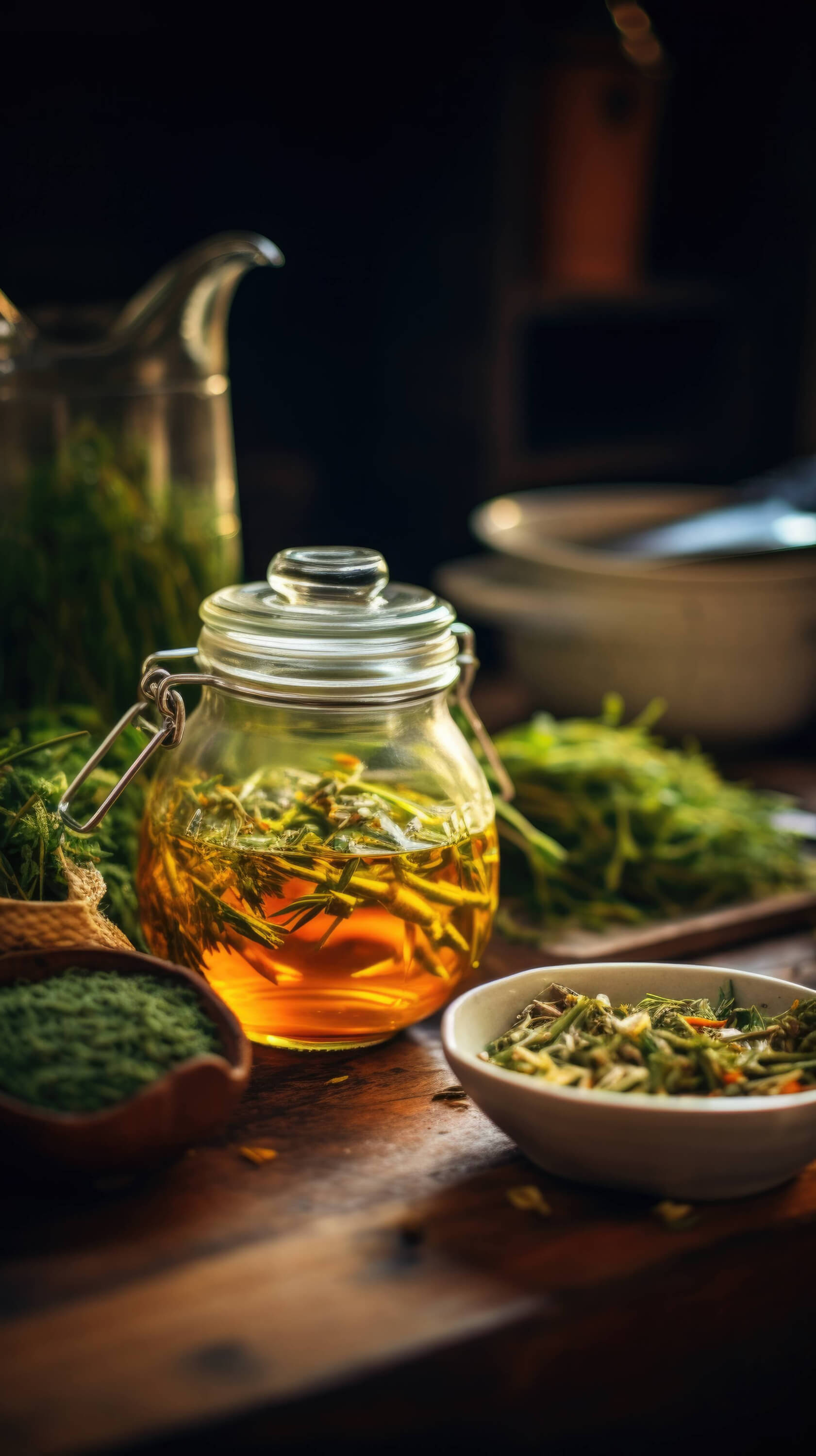
1. Set an Intention:
- Begin by setting a positive intention for your meal preparation. This could be about nourishing yourself and others, expressing gratitude for the food, or connecting with the vibrational essence of the ingredients - plants are living creatures with their own energies
2. Create a Sacred Space:
- Treat your kitchen as a sacred space. Forget about the "declutter" mantra you hear so often from experts. It assumes a negative notion of your kitchen and yourself. Instead, imagine you create a sacred sanctuary where everything in it is loved and cherished. For example, I love collecting beautiful containers. Some are vintage, some are from a craft shop. Some are glass, some look like they came from an old fashioned apothecary. Containers that inspire you, spark joy and make you feel good. The key message I like to inspire is: create your personal 'happy place' where you enjoy spending time in.
So, what I am saying is, make the place yours, let your heart sing and feel-good. When you love spending time there, and it puts a smile on your face, then that is all that matters!
- Your sacred space enhances the awareness and energy you put into your meal. Your sacred space is a magical playground of mindful nurturing food artisan rituals, fit for the divine Elder Goddess that you are.
- Touch everything with respectful gratitude, even as you are chopping, blending, and sampling. Nothing should be a rushed routine!
3. Practice Gratitude:
- Take a moment to express gratitude for the ingredients. Acknowledge the farmers, the earth, the sunlight, and the water that contributed to the growth and nourishment of the plants as being living creatures with their own energies.
- Recognize the life force within the plants and other ingredients, such as the natural vibrationally alive culinary essential oils. Treat them with care and reverence.
- Consider the energy and nutrients the food will provide, and prepare it in a way that respects its natural essence.
- You can say a silent thank you or even create a short gratitude ritual before you begin cooking.
4. Engage All Your Senses:
- Be fully present with each step of the meal preparation. Notice the colors, textures, and smells of the ingredients.
- Feel the vibrational energy of the plants as you handle them.
- Listen to the sounds of chopping, sizzling, and stirring.
5. Slow Down:
- Avoid rushing through the meal preparation process. Take your time with each task.
- Focus on the rhythm of your chopping, the flow of stirring, and the arrangement of your ingredients.
6. Mindful Breathing:
- Incorporate deep, conscious breathing into your cooking routine. This can help center your mind and connect you more deeply to the process.
- Take a few deep breaths before starting each new task to maintain focus and calm.
7. Visualize Energy Transfer:
- Visualize positive energy transferring from your hands into the food as you prepare it, and vice versa.
- Imagine the ingredients absorbing love, joy, and health to nourish those who will eat the meal.
8. Create Aesthetic Plates:
- Present your food artfully on the plate. This can be an expressive and creative part of the meditative process.
- Think about colors, shapes, and how the food is arranged to make the meal visually appealing.
 9. Mindful Eating:
9. Mindful Eating:
- Once the meal is prepared, extend the mindfulness to the act of eating.
- Eat slowly, savor each bite, and continue to express gratitude for the nourishment.
- Appreciate textures, flavors, and aromas.
- Put your utensils down between bites to savor each mouthful.
10. LISTEN TO YOUR BODY:
- Eat when you're hungry and stop when you're satisfied, not full.
- Pay attention to how different foods make you feel.
- Avoid eating out of boredom or stress.
11. MINIMISE DISTRACTIONS:
- Turn off screens and other distractions during meals.
- focus mindfully on your food and the act of eating.
- Engage in conversations with diners if you are not eating on your own.
This is Part 1 of the Conscious Kitchen.
Part 2 is: Stocking up Your Larder/Pantry/Store Cupboard
Part 3 is: Cooking and Meal Prep Equipment
Bright blessings,


DISCLAIMER
The information presented here is for educational purposes only. It is not intended to diagnose, prescribe or treat any health condition and should not be used as a substitute for consulting with a professional health care provider.
